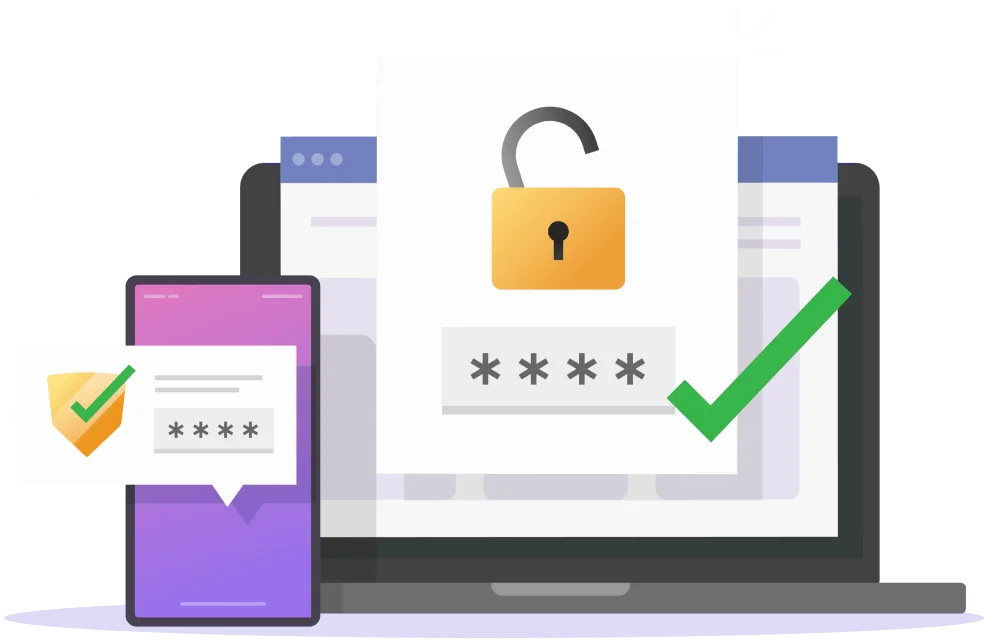Zero-Knowledge Encryption in Password Manager
How do you value your digital data? Is it something you care about or do you find it unimportant? We can help you with the answer. Security of all your data kept online is a top-priority thing and must be taken seriously.
A solid part of all financial operations is performed online, so all your bank credentials, accounts, passwords, and logins can be a target for cybercriminals. Luckily, there is plenty of security solutions like VPNs or password managers, that help you to protect your digital identity. Choose a zero-knowledge end-to-end password manager to protect your data.


What Zero-Knowledge Is
In simple words, Zero-Knowledge Proof (ZKP), is a technique that allows one to prove the validity of the statement without revealing it. This approach has become popular in crypto and software as it allows one to keep personal information anonymous. Go on reading to get a better understanding of what it is and how it can be implemented in crypto and software development.
Prover and Verifier
In the ZKP approach, the main roles are the Prover and Verifier. The Prover must prove he knows the statement. The Verifier must be able to verify the Prover actually knows it. This method works because the Verifier asks the Prover indirect questions that can be correctly answered only if the Prover really knows the statement. So random guess is excluded.
The Zero-Knowledge Proof technique is not as difficult as it seems to be. Its fundamental ideas can be easily explained with the following example, first published in 1990 by Jean-Jacques Quisquater and others in their paper "How to Explain Zero-Knowledge Protocols to Your Children". Go on reading to check it out.

The Zero-Knowledge Ali Baba Cave
Let’s imagine a round cave with one entrance, two paths (A and B), and a secret door inside. The task is simple - a Prover should prove that he knows the secret word to open the door inside without revealing this word. The Verifier outside the cave should verify that the Prover actually knows the password.

The Prover enters the cave and randomly chooses path A or B without revealing this information to the Verifier. The Verifier on his side names the Prover the path he should use to return, either A or B. If the Prover really knows the secret word, it will be easy to open the door and return along the required path.

If the Prover doesn’t know the secret password, he will have a 50% chance to guess it. But if the Verifier’s request is repeated numerous times the chance to return the requested path will be minimized. Thus, if the Prover repeatedly appears at the exit the Verifier names for, like, 20 times, it can be concluded that the Prover, in fact, knows the secret word even without revealing it.

Generally, the Zero-Knowledge Proof topic is pretty deep and needs some time to learn. If you are interested in how the ZKP technique helps to maintain secrecy and how it can be implemented in the crypto and blockchain world we highly recommend checking out our detailed blog articles The Role of Zero-Knowledge Proof in the Blockchain World and Zero-Knowledge Cryptography: Maintaining Secrecy with Zero-Knowledge Proof.

How Zero-Knowledge Protects Your Data in Password Manager
The ZKP architecture is used in reliable password managers to guarantee that only the owner of the Vault knows what is stored in it. All your items kept in the Vaults can be read only if you have the Master Password. So even if the cloud server of the password manager is hacked, cybercriminals will not be able to get access to your data because it is stored in encrypted form, and only you with your Master Password can decrypt it.
Using the zero-knowledge architecture password manager ensures that all your data kept in Vaults is encrypted on the side of a client and can be decrypted only with Master Password. You are offered to create it when you create a Passwarden account.
Due to zero-knowledge end-to-end encryption, we don’t have access to your personal data and your Master Password as well. So ensure, that you’ve saved it and your Recovery Key in a secure place.
Enjoy the benefits of zero-knowledge encryption with Passwarden
Passwarden is a password manager that provides top-notch end-to-end encryption technologies to guarantee the security of your data.
Note: Passwarden is also available as a part of the MonoDefense security bundle.

Master Password Can Be Reset Only by the Account Owner
As Passwarden applies client-side end-to-end encryption technology, both encryption, and decryption processes are performed locally on the user’s device, but not on KeepSolid servers. As a result, all user data, including Master Password reaches our servers in encrypted form only. But does the loss of your Master Password mean the loss of all your data? Of course, not. Recovery Key is your backdoor.

What Is a Recovery Key
A Recovery Key is a one-time code that allows you to renew your Master Password. When you create a new Passwarden account you will get your Recovery Key in the form of a one-time code or a QR code. You can save it in different ways:
- On a USB flash drive
- In a .txt or .doc file
- print on paper
It is important to save it because it is the only way to renew access to your data if you lose your Master Password.

How to Use Recovery Key to Set a New Master Password
Step 1.
Open your Passwarden app and click Sign in with the Recovery Key.
Step 2.
Enter your Recovery Key.
Step 3.
Create and confirm your new Master Password.
Benefits of Zero-Knowledge Password Manager

Two-Factor Authentication
TFA adds an extra layer of security to your Passwarden account by setting up a second type of authentication in addition to your password.

Protect every access point
With coverage over the desktop and mobile apps through single sign-on and password management, Zero-Knowledge Passwarden secures every access point.

Security technologies
Along with zero-knowledge technologies, Passwarden implements top-notch encryption algorithms AES-256 and EC p-384. They guarantee the integrity of all stored valuable data.

Multiplatform
All zero-knowledge algorithms are available on many platforms: iOS, Android, macOS, Windows, Chrome, Edge, Opera, Firefox, and as a web app.

Data import
Migration of data from other apps and services can be made securely in two clicks without any risks of losing the integrity of your transferred info.

Password generator
Passwarden offers a built-in password generator that allows the creation of strong and unique combinations to protect the most sensitive data on any of your accounts.




Check out zero-knowledge technologies in Passwarden
Implemented end-to-end encryption will ensure the reliability and security of stored data.